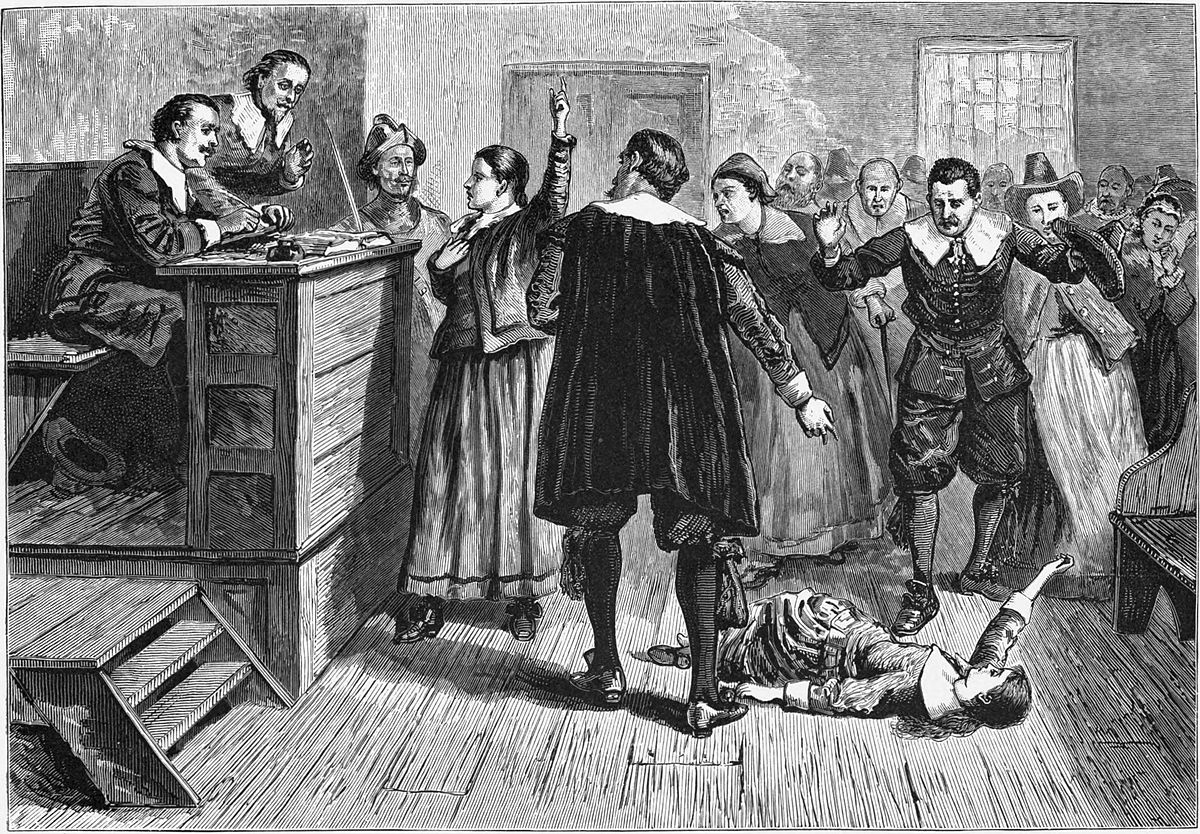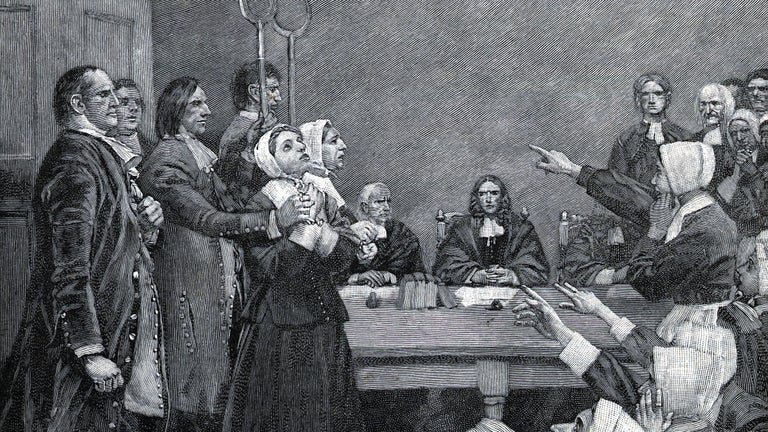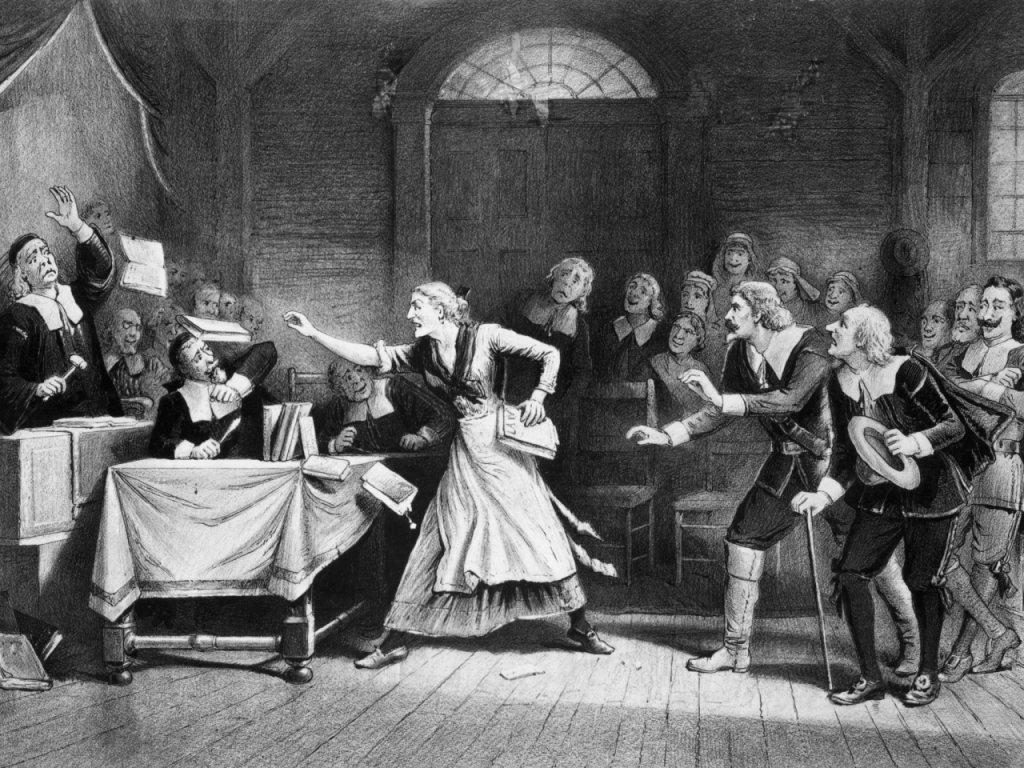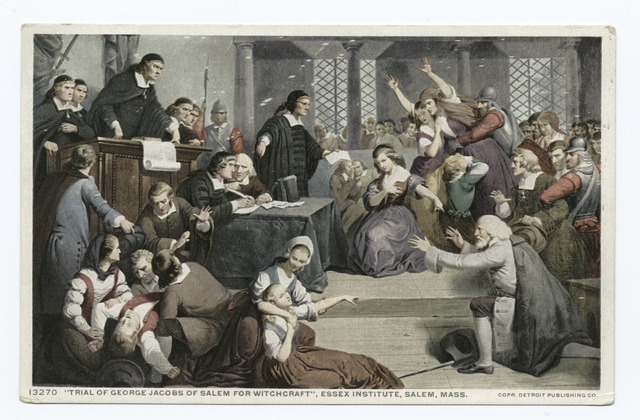The Salem Witch Trials: Hysteria and Witchcraft Accusations were a dark period in American history that occurred in the late 17th century. It was a time when fear, paranoia, and superstition led to the wrongful persecution and execution of numerous innocent individuals. This article delves into the events surrounding the Salem Witch Trials, exploring the factors that contributed to the hysteria, the role of witchcraft accusations, and the lasting impact it had on society.
The Origins of Hysteria: A Spark Ignites the Flames
The Salem Witch Trials: Hysteria and Witchcraft Accusations originated from a small incident in Salem Village, Massachusetts. In January 1692, two young girls, Betty Parris and Abigail Williams, began exhibiting strange behavior. They experienced fits, convulsions, and claimed to be tormented by unseen forces. This unusual occurrence captured the attention of the community and set off a chain reaction of fear and suspicion.
The Accusations Begin: The Blame Game Commences
As news of the girls’ afflictions spread throughout the village, fingers started pointing at individuals whom they believed were responsible for these “bewitchments.” The first to face accusations were three women: Sarah Good, Sarah Osborne, and Tituba, a Caribbean slave. They were easy targets, considered outsiders within the community.
The Trials Begin: Justice or Injustice?
The Salem Witch Trials: Hysteria and Witchcraft Accusations quickly evolved into a legal proceeding. The accused were subjected to trials where their guilt or innocence was determined. The legal system, however, was deeply flawed, and the trials were characterized by hearsay, spectral evidence, and a presumption of guilt rather than innocence.
The Role of Witchcraft Accusations: Fueling the Hysteria
The Power of Belief: Superstition Takes Hold
During the Salem Witch Trials, beliefs in witchcraft and the Devil were deeply ingrained in the minds of the people. They believed that witches had made a pact with the Devil, enabling them to carry out acts of malevolence. This belief system provided the perfect backdrop for the accusations and fueled the hysteria that gripped Salem Village.
Accusations Run Rampant: Who Was Targeted?
The accused during the Salem Witch Trials were primarily women, particularly those who were considered social outcasts or displayed non-conforming behavior. Women who defied societal norms or had a reputation for being difficult or disagreeable were often targeted. This gender bias was a reflection of the prevailing patriarchal society of the time.
Spectral Evidence: The Unseen Testimonies
One of the most controversial aspects of the Salem Witch Trials was the acceptance of spectral evidence. Spectral evidence referred to the testimony of the afflicted girls, who claimed to see the apparitions of the accused witches tormenting them. This form of evidence, however, lacked any tangible proof and was purely based on the subjective experiences of the accusers.
Factors Contributing to the Hysteria: A Perfect Storm
Religious Fanaticism: The Influence of Puritanism
The Puritan beliefs held by the residents of Salem Village played a significant role in the escalation of the witchcraft accusations. Puritans viewed the world as a battleground between good and evil, with witches being seen as servants of Satan. The strict religious doctrine and the fear of eternal damnation heightened the paranoia and fueled the witch-hunting fervor.
Social and Economic Strains: Tensions within the Community
The Salem Village community was plagued by social and economic tensions. The rigid social hierarchy, disputes over land, and conflicts between factions created a highly charged atmosphere. The witchcraft accusations provided an outlet for the release of these tensions, allowing people to vent their frustrations and redirect blame onto others.
Power Struggles and Personal Vendettas: Settling Scores
Some of the accusations during the Salem Witch Trials were driven by personal vendettas and power struggles. By accusing someone of witchcraft, individuals could eliminate their rivals or settle old scores. The trials became a tool for personal gain, further escalating the hysteria and leading to an increasing number of accusations.
The Aftermath: Lessons Learned and Lasting Impact
The End of the Trials: A Bitter Realization
The Salem Witch Trials eventually came to an end, as doubts began to emerge about the validity of the accusations. Those who had once fervently supported the trials started to question the reliability of the spectral evidence. In May 1693, the remaining accused were released from prison, and the legal proceedings were formally discontinued.
Lingering Trauma: The Legacy of the Witch Trials
The Salem Witch Trials left an indelible mark on American history and collective memory. The trials exposed the dangers of mass hysteria, the consequences of unchecked power, and the fragility of justice in times of fear. It serves as a cautionary tale, reminding us of the importance of due process, critical thinking, and the protection of individual rights.
Historical Reflections: Remembering the Past
Today, the Salem Witch Trials continue to be studied and remembered as a dark chapter in American history. The events of 1692 serve as a reminder of the dangers of prejudice, intolerance, and the consequences of unchecked accusations. By examining this period, we gain insight into the complexities of human behavior and the vulnerability of societies in times of fear.
Frequently Asked Questions (FAQs)
Q: What were the Salem Witch Trials?
A: The Salem Witch Trials were a series of legal proceedings that took place in Salem Village, Massachusetts, in 1692. They involved the wrongful persecution and execution of individuals accused of witchcraft.
Q: How did the hysteria surrounding the trials start?
A: The hysteria began when two young girls, Betty Parris and Abigail Williams, displayed unusual behavior and claimed to be tormented by unseen forces. Their afflictions sparked fear and suspicion within the community, leading to witchcraft accusations.
Q: Were all the accused guilty of practicing witchcraft?
A: No, many of those accused were innocent of practicing witchcraft. The trials were characterized by flawed legal proceedings, reliance on spectral evidence, and a presumption of guilt rather than innocence.
Q: What role did superstition play in the trials?
A: Superstition played a significant role in the trials. The belief in witches and the Devil was deeply ingrained in the minds of the people, creating a fertile ground for accusations and fueling the hysteria.
Q: How did the trials come to an end?
A: The trials came to an end when doubts began to arise about the validity of the accusations. In May 1693, the remaining accused were released from prison, and the legal proceedings were formally discontinued.
Q: What lessons can we learn from the Salem Witch Trials?
A: The Salem Witch Trials teach us about the dangers of mass hysteria, the consequences of unchecked power, and the importance of due process and critical thinking. They serve as a reminder of the need to protect individual rights and prevent the repetition of such injustices.
Conclusion
The Salem Witch Trials: Hysteria and Witchcraft Accusations were a tragic chapter in American history. The events of 1692 serve as a sobering reminder of the devastating impact that fear, paranoia, and unfounded accusations can have on individuals and communities. It is crucial that we remember and learn from the mistakes of the past, striving to create a more just and compassionate society. By understanding the factors that contributed to the hysteria and the role of witchcraft accusations, we can work towards preventing such injustices in the future.






Comment here